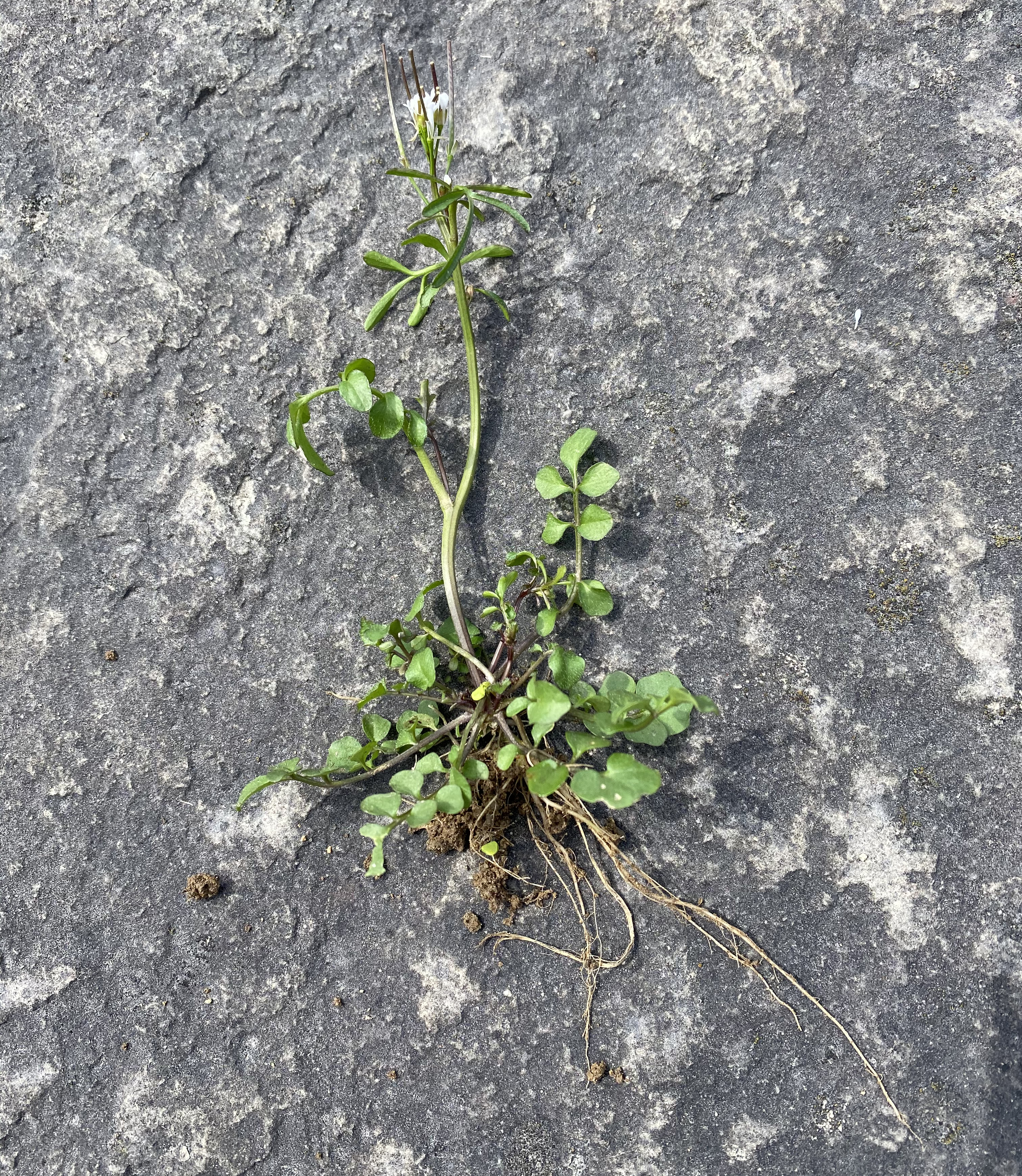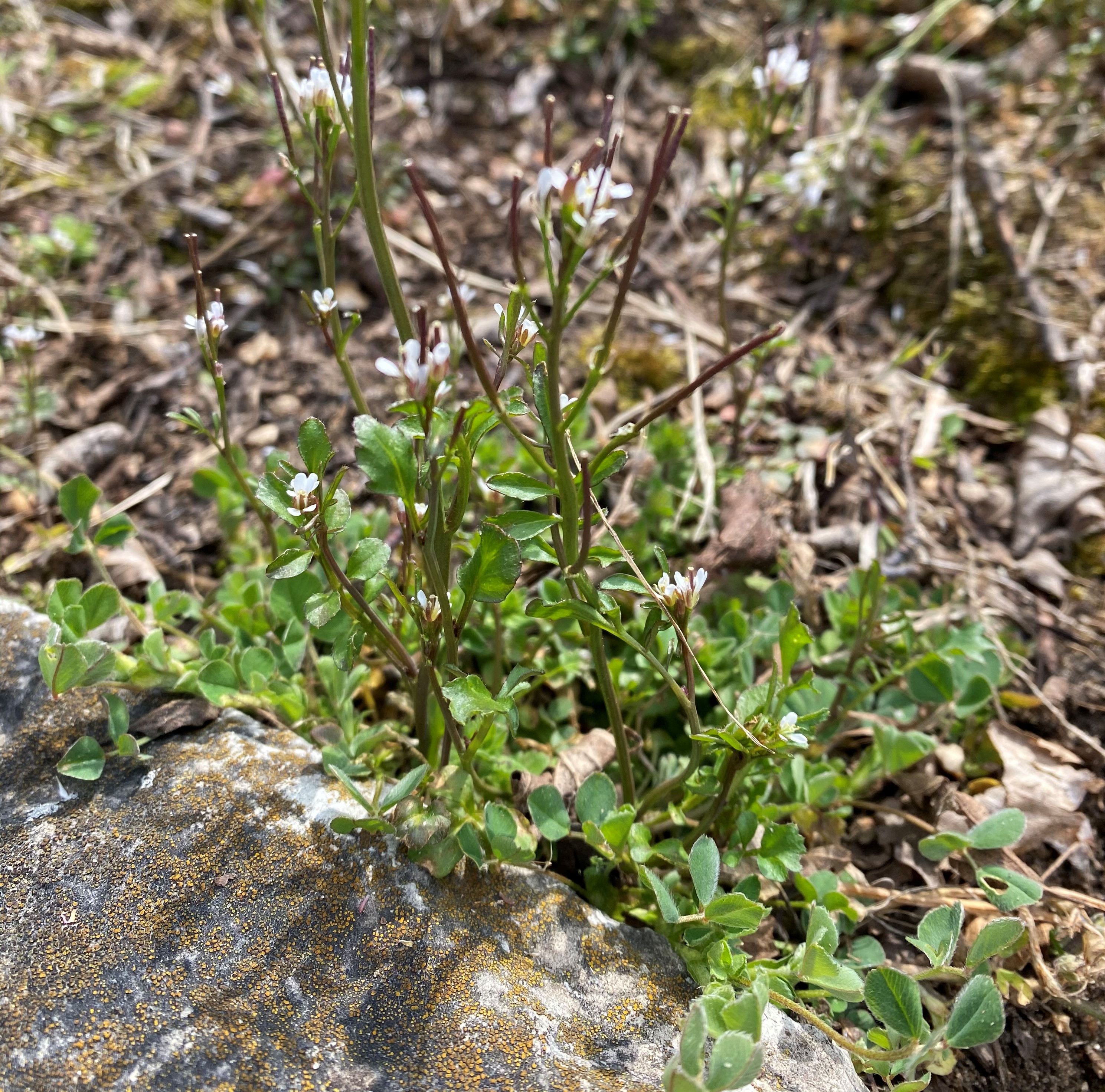Hairy bittercress: A weed to watch out for
Hairy bittercress is an annual weed that can spread quickly.

Have you recently noticed plants with small, white flowers on the edges of your lawn, flowerbeds and rock pathways? During April and May, populations of the winter annual weed hairy bittercress (Cardamine hirsuta) become increasingly visible. Hairy bittercress has a low growing rosette similar in form to a dandelion. It raises its profile in early spring with the appearance of flowers and seeds on a vertical stem. Like many members of the mustard family, hairy bittercress sets seed prolifically. It grows quickly and a few plants or seeds can generate a more widespread infestation in even a year’s time.

Hairy bittercress is a winter annual weed. Its seeds germinate in fall beginning as early as September. The first true leaves are heart-shaped, followed by compound leaves with two or more pairs of leaflets and a kidney shaped terminal leaflet. The leaves that emerge in the fall form a small rosette that will overwinter. Once the weather warms in spring, it sends up stalks of small, white flowers followed by slender seed pods known as siliques.

Once the seed pods ripen, disturbing the pods can propel the seeds as far as 16 feet from the mother plant. This seed dispersal adds to the soil seed bank and primes the area for another infestation to emerge in early fall. After setting seed, the life cycle is complete and the plants die. Hairy bittercress and other winter annual weed species, like common chickweed and purple deadnettle, are not typically present during the summer months.

Hairy bittercress is best managed mechanically when it is young. Remove it by hand, hoe or tillage in early fall or early spring before it sets seed. If plants are flowering, composting is discouraged as seeds may develop. To manage this weed using herbicides, the proactive approach would be to use a pre-emergence herbicide in the late summer (late August to early September) to target the plants at the time of germination and prevent successful emergence.
If plants have already emerged, applying a post-emergence herbicide to actively growing plants before seedpods form may be effective. If using an herbicide, be certain it contains an active ingredient that will target this weed. Always read and follow all labeled instructions to increase effectiveness and prevent personal or environmental harm.



 Print
Print Email
Email